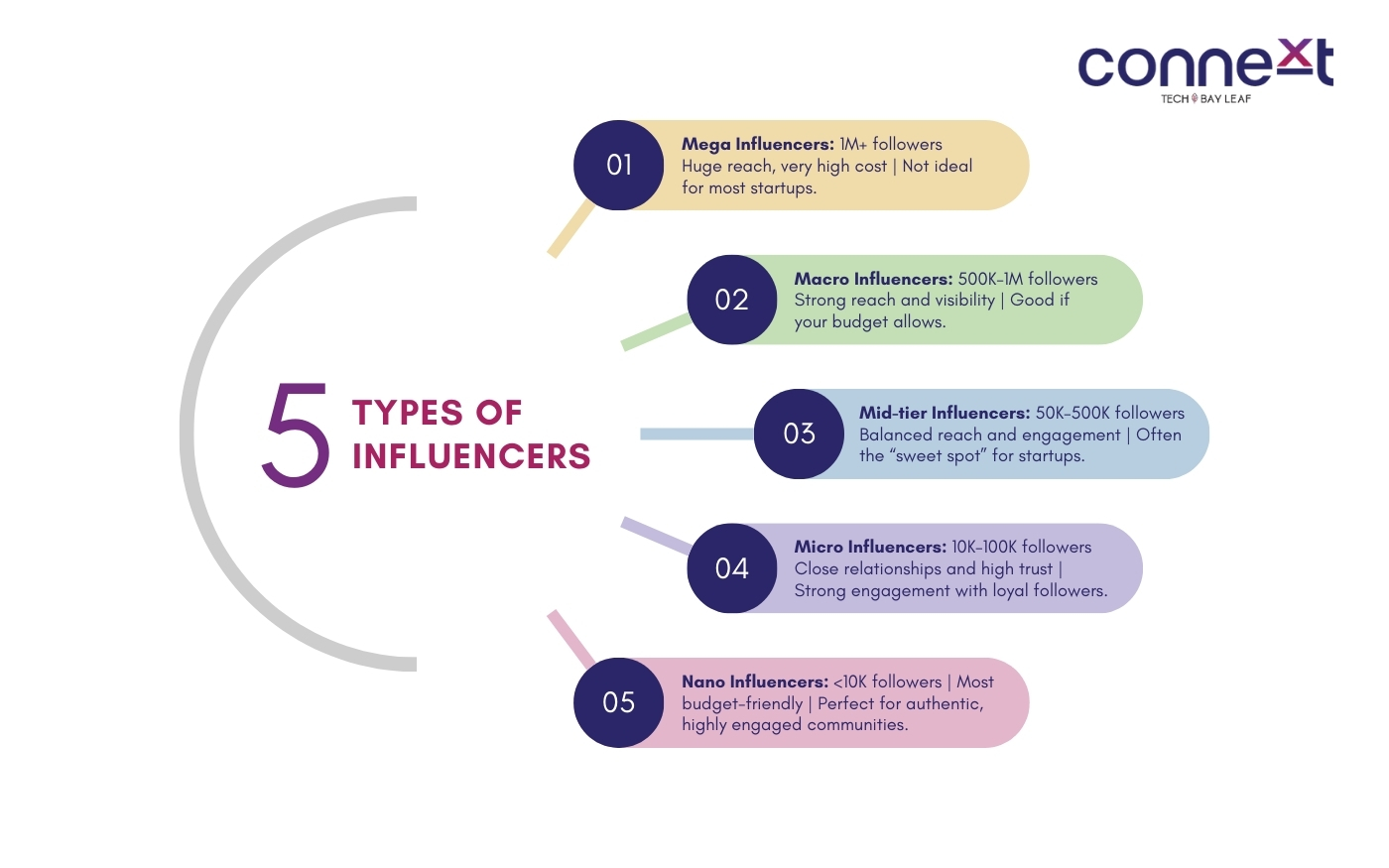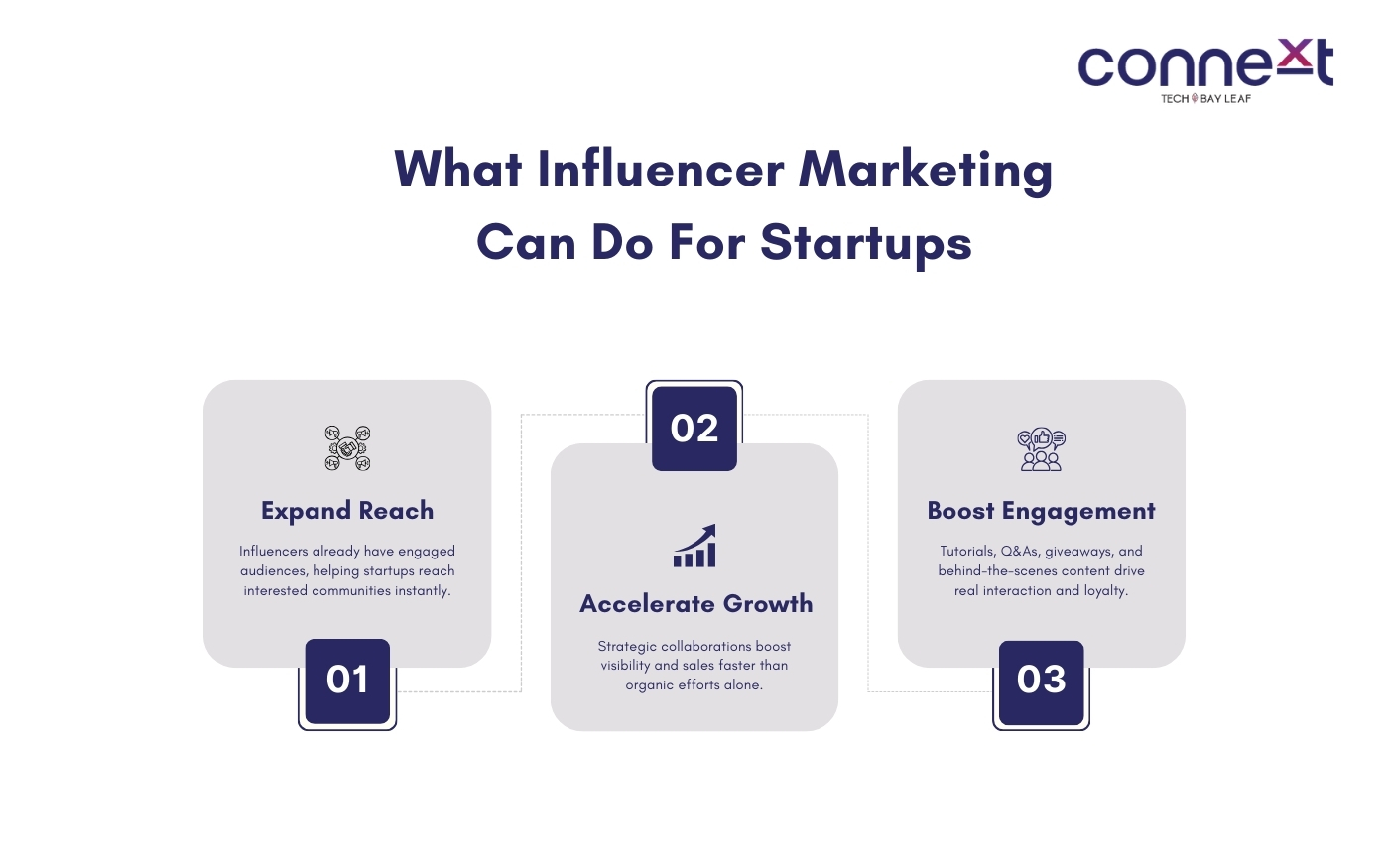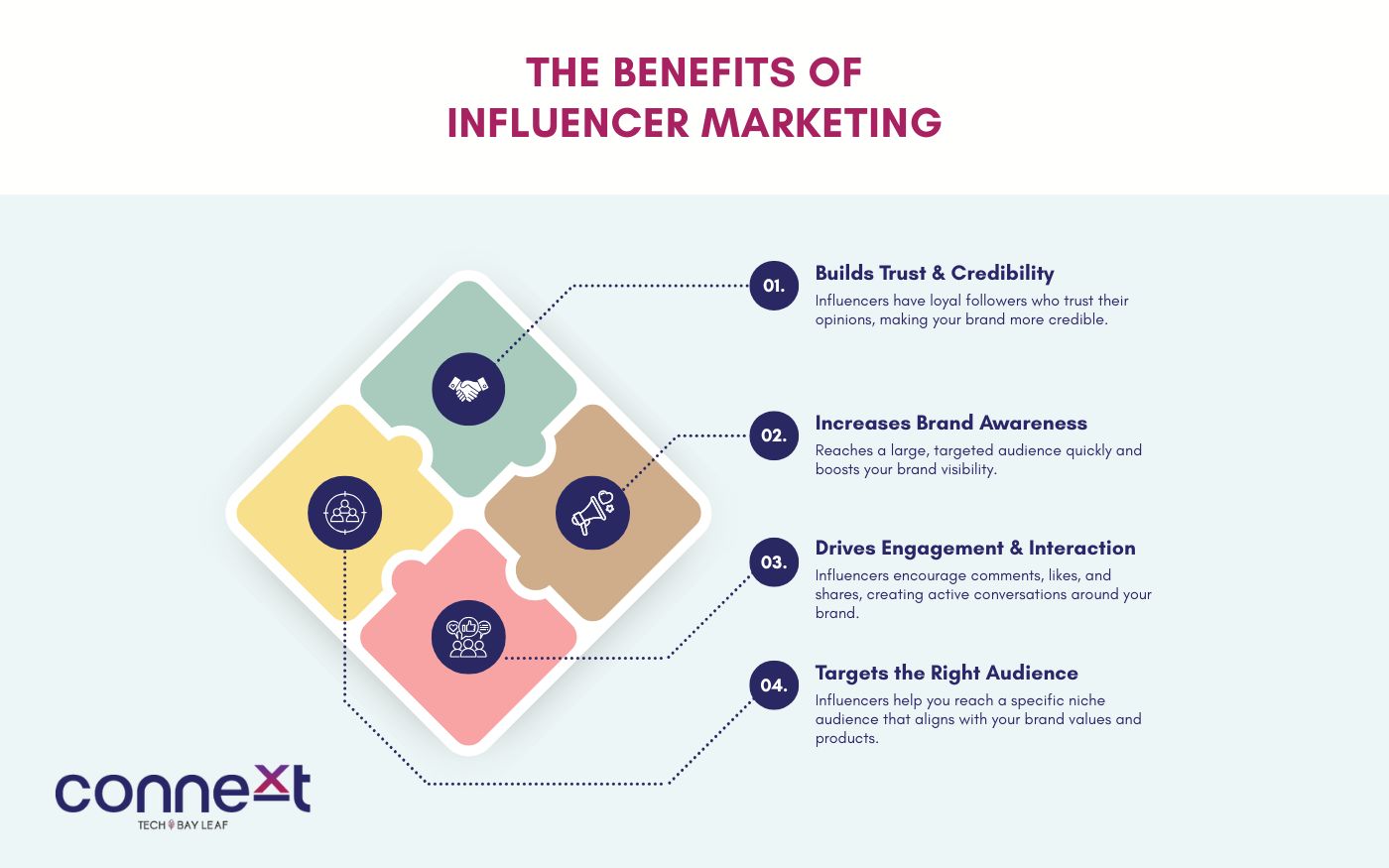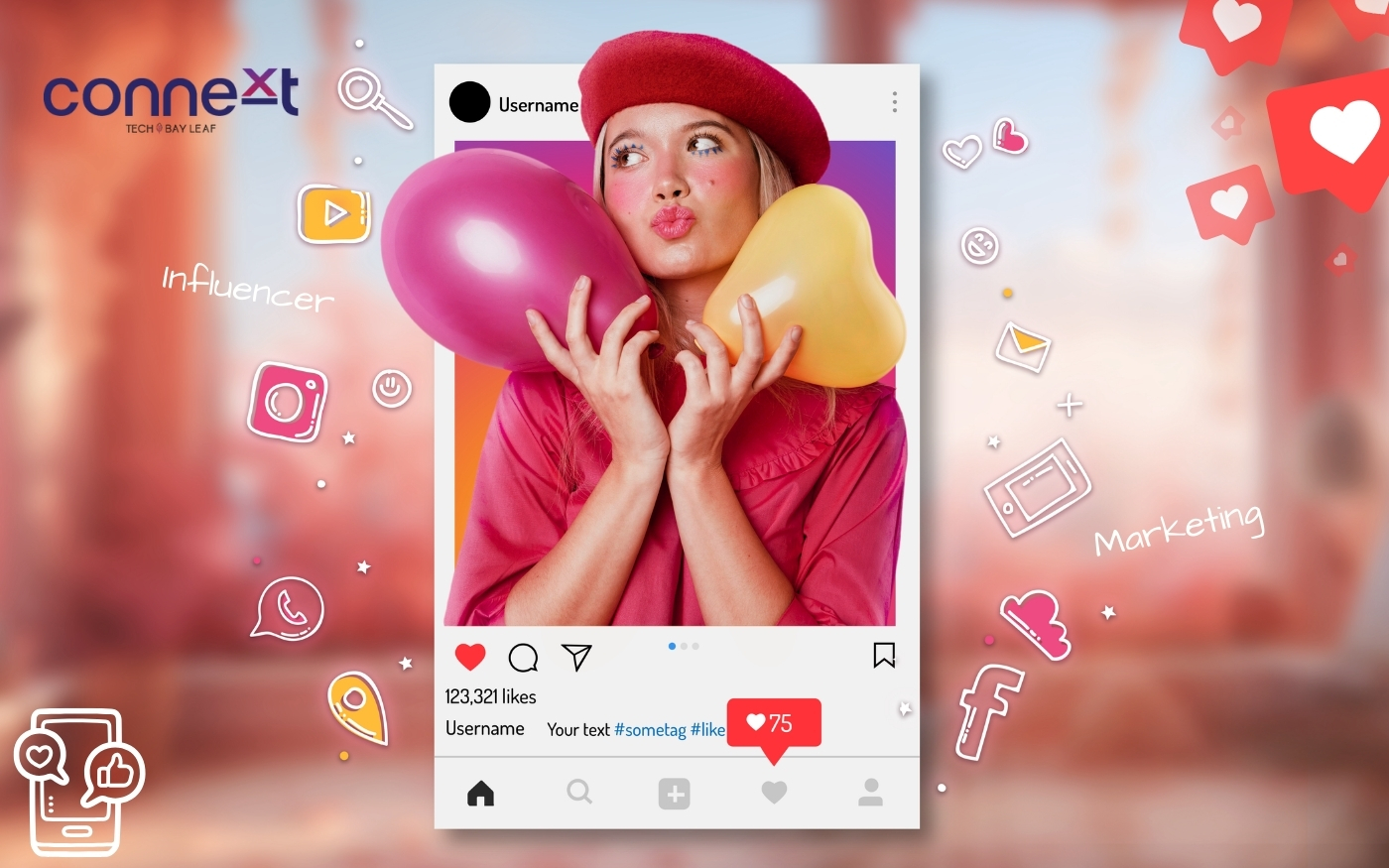Launching a startup today is easier than ever. But standing out in a sea of endless scrolls and shrinking attention spans? That’s where things get tricky. If you’ve ever felt like your brand is struggling to be heard in a stadium full of shouting voices, you’re not alone. That’s exactly where influencer marketing 101 comes in; not as a magic trick, but as a smart way to earn trust and attention.
What is Influencer Marketing?
If you’re on social media 24×7, the term isn’t new. However, for someone fairly new to influencer marketing, it’s essentially about collaboration.
Instead of shouting into the digital void, brands team up with people who already have an audience that listens—whether that’s a YouTuber, an Instagram creator, or a LinkedIn thought leader. Think of influencers as bridges: they connect startups to communities built on trust, relatability, and shared interests. In short, it’s word-of-mouth for the digital age, only with better reach and far less guesswork.
Why Should Startups Care?
Let’s be honest: you need your brand to be seen and heard, and the competition is brutal. The simplest way to stand out? Work with someone who already does. Influencers have spent years building credibility and winning over audiences that actually pay attention. With the right match, their followers can become your customers.
Of course, there’s a catch. Most startups don’t have endless marketing budgets. But here’s the good news: you don’t need an international celebrity to make an impact. Sometimes, micro-influencer marketing with a loyal niche following can deliver better results than the biggest names on the internet.
That’s where performance marketing for startups comes in. By focusing on measurable outcomes like sign-ups, conversions, or sales, you can ensure every influencer collaboration drives real growth without wasting resources.
Influencers Come in All Shapes and Sizes
Here’s the thing: “influencer” isn’t a one-size-fits-all label—or in your case, a one-budget-fits-all solution. Just as startups vary in size, so do influencers. Knowing the difference can save you both money and headaches. Broadly, they can be split into five categories:
- Mega influencers – Think international celebrities and top content creators with over a million followers. Their reach is massive. The cost? Even more. For most startups, they may not be the best choice.
- Macro influencers – Sitting between 500K and 1M followers, these influencers still offer strong reach and visibility. They can be an option for startups that are ready to invest a bit more.
- Mid-tier influencers – With 50K–500K followers, this group offers a balance of solid reach and good engagement. They’re often seen as the “sweet spot” between big names and niche creators.
- Micro influencers – Don’t let the name mislead you. With 10K–100K followers, their smaller audience size often works in their favor, helping them build closer relationships and higher trust. A loyal base usually means stronger engagement.
- Nano influencers – With fewer than 10K followers, they’re the most budget-friendly. What they lack in numbers, they make up for with tight-knit, highly engaged communities. They’re perfect for startups looking for authenticity.
There isn’t a one-size-fits-all influencer for every startup. The best choice depends on your objectives, target audience, and available budget. By understanding the different influencer categories, you can make informed decisions whether your goal is broad visibility, high engagement, or authentic connections without overspending.
Beyond influencer selection, pairing these efforts with creative services for brand growth ensures your campaigns are not only well-matched but also strategically designed to scale your presence and impact.

What Influencer Marketing Can Do For Startups
Audiences on social media don’t want salesy content. They want genuine recommendations from someone they trust—and an influencer they admire and follow could be that someone. When startups team up with influencers who genuinely believe in their product, it’s an organic endorsement that boosts credibility and results in conversions. Influencers introduce and endorse brands in a way that feels casual and authentic, never pushy or salesy.
Here are some of the benefits for startups that adopt influencer marketing for brands:
- Expand Reach – Influencers already have engaged audiences, letting startups skip the labor of building a following from scratch. If a wellness brand partners with health-focused creators on Instagram or TikTok, it will instantly reach communities interested in their products.
- Accelerate Growth – Strategic influencer collaborations can turn a small startup into a recognized brand quickly. If a fashion retailer selling only a specific set of products partnered with niche fashion bloggers, it will rapidly increase visibility and drive sales. Influencers amplify a startup’s message far beyond what organic reach alone can achieve.
- Boost Engagement – Influencers create opportunities for genuine interaction. By sharing content such as tutorials, Q&As, giveaways, or behind-the-scenes glimpses, they inspire their followers to participate, comment, and share. For instance, beauty brands often see stronger engagement when influencers showcase products through live demos or unboxing experiences, turning casual viewers into loyal supporters. To maximize results, startups can boost engagement with creative content by combining influencer insights with visually appealing, shareable posts. This approach ensures every collaboration captures attention, sparks conversation, and strengthens brand loyalty.
Influencer marketing basics are powerful, cost-effective growth strategies rather than just trends. Thoughtful collaborations can give startups a real head start in the digital noise.

How Can Startups Contribute Too?
- Target Small-Scale Influencers – Smaller creators with 10K–50K followers often spark the most meaningful engagement. Focus on influencers whose content aligns with your brand and resonates with your target audience.
- Cultivate Long-Term Partnerships – Building lasting relationships with influencers pays off more than one-offs. Offer value like early access, revenue shares, or opportunities for creative input and maintain personal, regular communication. Recognize and celebrate their contributions.
- Let Creators Lead – Influencers know their audience best. Give them guidance but allow creative freedom. Trust and flexibility result in content that feels natural, relatable, and authentic.
- Offer Exclusive Deals – Limited-time codes or special promotions turn curiosity into action. Unique offers allow you to track conversions easily. Make them personal, relevant, and timed to create urgency without feeling pushy.
- Send Products for Genuine Reviews – Product seeding builds credibility in a way that paid ads can’t. Send items with no strings attached, encourage honest feedback, and include simple, shareable info.
- Test Different Content Styles – From tutorials and unboxings to giveaways, Q&As, or behind-the-scenes posts, experimenting with formats shows what resonates with your audience. Observe which content drives engagement and conversions, then iterate quickly to optimize results.
- Keep an Eye on Competitors – Monitor how similar brands use influencers. Look at who they partner with, engagement levels, and messaging approaches. Identify gaps they’re leaving open, then leverage those insights to craft smarter, more targeted campaigns.
- Use Metrics to Guide Decisions – Data is your roadmap. Track engagement, clicks, conversions, and audience demographics to see which influencers and content formats work best. Use insights to refine future campaigns, double down on what works, and cut what doesn’t.
To scale these efforts efficiently, startups should explore scalable marketing solutions for startups that combine influencer insights, performance tracking, and adaptable content strategies—ensuring campaigns grow with your brand without overextending resources.
Influencer Marketing Works
At the end of the day, how influencer marketing works is simple: it’s about connection. It’s about connecting your startup to the right audiences through voices they already trust. It’s not a shortcut or a gimmick but a strategic, creative way to cut through the noise, build credibility, and spark engagement. When done thoughtfully, these collaborations don’t just amplify your message. They also turn followers into advocates and give your brand a lasting presence in a crowded digital world.
If you’re new to this, consider this a beginner’s guide to influencer marketing—a starting point to explore influencer strategy for small businesses, understand micro influencer marketing, and confidently launch an influencer campaign that delivers real results.
Get Started With Connext
For startups, influencer marketing is a growth engine. Connext by Tech Bay Leaf helps brands cut through the noise by simplifying creator discovery, outreach, and campaign management. Whether it’s teaming up with micro-influencers to spark early traction or scaling into larger partnerships, Connext, an influencer marketing agency in the US, equips startups with the tools to run authentic, data-driven campaigns that build credibility fast.
Ready to accelerate your growth? Get started with Connext today and put influencer marketing to work for your startup.


